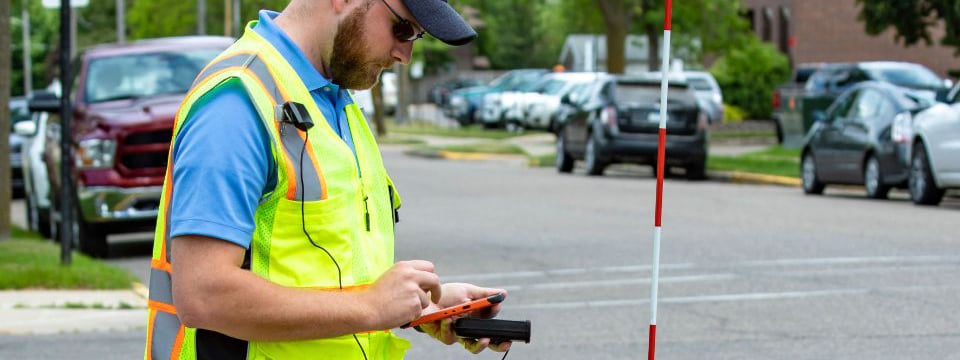Looking for a robust yet simple asset management system? There’s an app for that!

Knowing where things like street signs, utilities, water systems, ADA ramps, fire hydrants, and even roads are—and what condition they’re in—can help you effectively maintain your assets and plan for the future.
City staff in International Falls, MN, had found it increasingly difficult to manage their projects. They wanted an asset management system to track key assets and help daily operations run more efficiently. After a discussion with Widseth about their concerns, needs, and wants, we advised they begin by mapping their assets (i.e., create an inventory of what they have, including the location and condition of each item) prior to implementing a management system.
Map Your Assets
Widseth helped International Falls map assets like manholes, lift stations, water pumps and lines, streets, street signs, light poles, trash cans, water meters, etc. With training by our team, city staff were able to map signs on their own within a few days, speeding up the process and saving money. With the asset map complete, the city was then able to move forward with a management system.
Management System
Widseth guided the city toward a relatively simple and inexpensive system to get them started. The map-based system is accessed and maintained via a web browser or mobile app, making it very user-friendly. We used industry standard applications while gathering data, allowing International Falls to maintain control and ownership of their data.
System Benefits
International Falls’ system offers several benefits, such as:
- Each staff member has a user account and can access cloud-based asset data anytime, anywhere.
- Staff can easily locate, collect, and edit data on a mobile device in the field.
- Work orders can be created and managed via the app.
- The app allows access to work in progress and work completed statistics for budgeting.
- Form-based field reporting is available for different departments.
- Residents can report problems at a link on the city’s website (e.g., a tree has fallen), and the information generates a work order request for follow-up by city employees. The entire process is simplified and efficient.
The ease of use, customization, and low cost made this a great option for the city. With its new system in place, International Falls has found managing work orders to be much more organized and efficient. They also have accurate data and reliable statistics gathered from the management system to use for future planning and budgeting.

Search Archives
Categories
Posts by Topic
- Staff News (98)
- Architecture (66)
- Funding (61)
- Civil Engineering (53)
- Education (48)
- Architectural Design (38)
- Engineering (37)
- Land Surveying (32)
- Surveying (26)
- Environmental (22)
- Commercial (21)
- Interior Design (18)
- Streets & Highways (17)
- Utilities (17)
- Water Resources Engineering (14)
- Industrial (13)
- Community (11)
- Cultural (11)
- Landscape Architecture (11)
- Sports & Recreation (11)
- Government (10)
- Aerial Mapping (8)
- Mechanical Engineering (8)
- GIS (7)
- Electrical Engineering (6)
- Structural Engineering (6)
- Senior Living (5)
- Transportation Engineering (5)
- Bridges (3)
- Site Design (3)
- Transmission & Distribution (3)
- Healthcare (2)
- Planning (2)
- manufacturing (1)
Recent Posts
-
May 06, 2024



